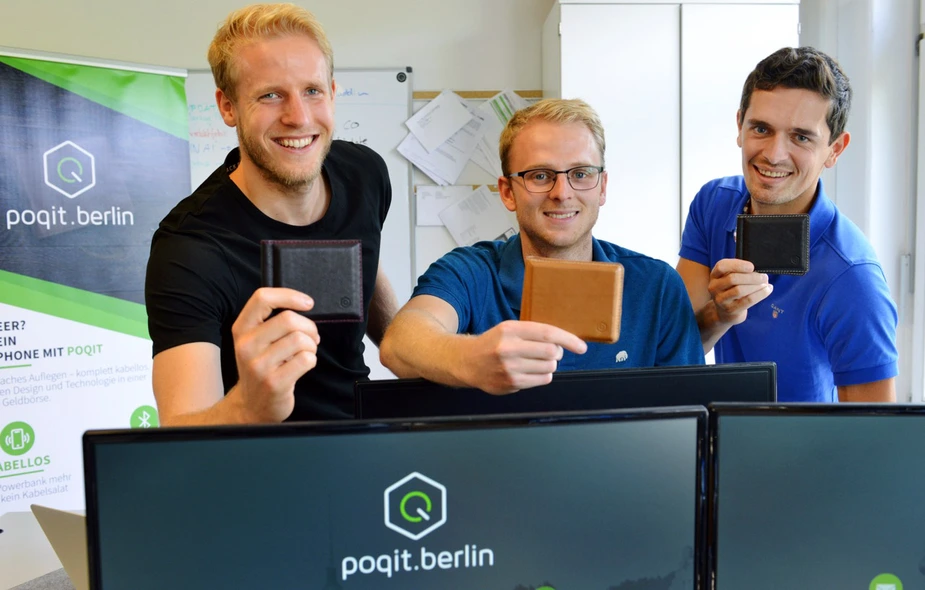Power from a Briefcase
Three founders from Adlershof see a great future for wireless charging
Three founders from Adlershof see a great future for wireless charging and want to bring new versions of everyday projects to market, including a battery-charging wallet.
We are next to an old socialist housing estate, beyond the Teltow Canal. The lawn around us is unmown. Here, in Wegedornstraße 32, is where the Humboldt-Universität zu Berlin (HU) has its start-up house. This is the home of the start-up poqit. Looking at Timo, Martin and Marko standing next to each other, they could be mistaken for a boyband. Actually, they are working on innovative future technologies.
Come on then, how does the battery-charging wallet work? One simply puts the phone on the classy leather poquit-wallet and it starts charging. Wirelessly. “This is where the technical components are built in,” explains Marko Berndt, the communications pro of the poqit-team. “It consists of a circuit board, the receiver coil, the transmitter coil, and, of course, the battery.”
The battery in the wallet gets the power from a base station. “Or from the IKEA lamps,” one of the boys adds briefly and points to the desks. I see. Ikea recently started offering lamps and bed stands with wireless charges. Very handy indeed. And proof that the idea of these founders is state-of-the-art.
Timo Golomski and Martin Volmerding were backpacking in Australia three years ago and depended on their phone. They were annoyed by the fact that the battery would die at the precise moment when they were looking for the next hostel. That’s how poqit started. “We were looking for a solution, which you don’t have to think of packing,” says Martin, the software developer. Timo, a mechatronic engineer by trade, got Marko on board, who was on the last lap of studying business communication at the time.
Straight from uni – right into founding a new business. The three of them found a mentor at the Institute for Computer Engineering at HU Berlin, received an Exist Start-Up Grant in 2015, and moved into the “Gründerhaus der HU” (the aforementioned start-up house of HU) on Teltowcanal with a number of other fresh companies. “You know what’s crazy: despite being quite far afield, because Adlershof is becoming a science hub more and more, all our partners are here. From this perspective, we feel like were right in the middle of it all,” the young entrepreneurs unanimously agree.
The three founders are in the middle of developing the fourth prototype of their wallet, which recharges phones invisibly and wirelessly. They have gotten the attention of the IT scene and other users and their investment crowdfunding campaign is playing out nicely. Investors come from Canada, Georgia, Bangladesh, Austria, Switzerland, and Germany. Martin lists the countries with a sense of pride. “Our aim now is to penetrate the English-speaking world.” Beginning of sales for the rather plain and masculine piece of leather is planned for the end of 2016 or beginning of 2017. A purse and a handbag for women are already being planned. Naturally, these will be wireless – and the first in the whole world. But, who knows, they might have moved out of the HU start-up building in Wegedornstraße by then – and moved to Adlershof.
By Jördis Götz for Adlershof Journal
